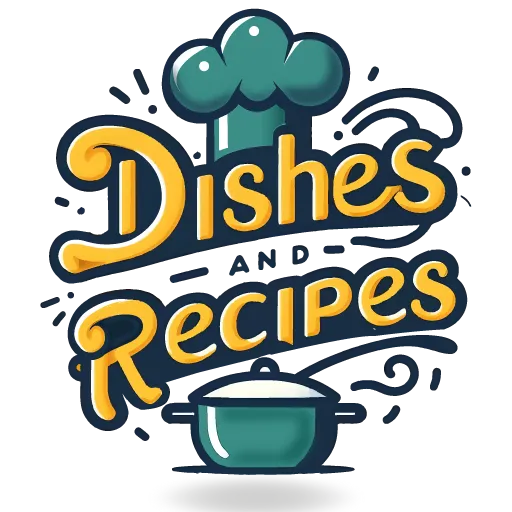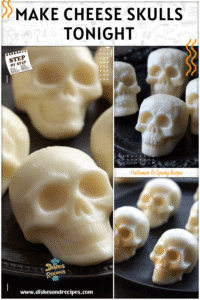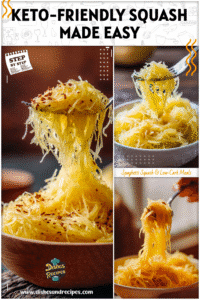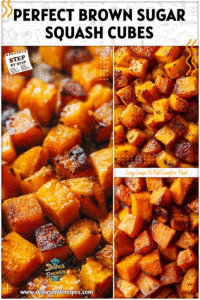Spaghetti squash has become a staple in many kitchens thanks to its light, noodle-like strands and naturally sweet flavor. As a low-carb alternative to pasta, it fits seamlessly into healthy meals while still feeling hearty and satisfying. But if you’ve ever struggled with cutting into a raw squash, you know it’s not always easy. That’s where cooking spaghetti squash whole comes in—it’s a time-saving method that keeps the flesh tender and moist without the risk of wrestling with a hard rind. In this guide, we’ll cover exactly how to cook spaghetti squash whole, share handy tips, and offer delicious spaghetti squash recipes you’ll keep making again and again.
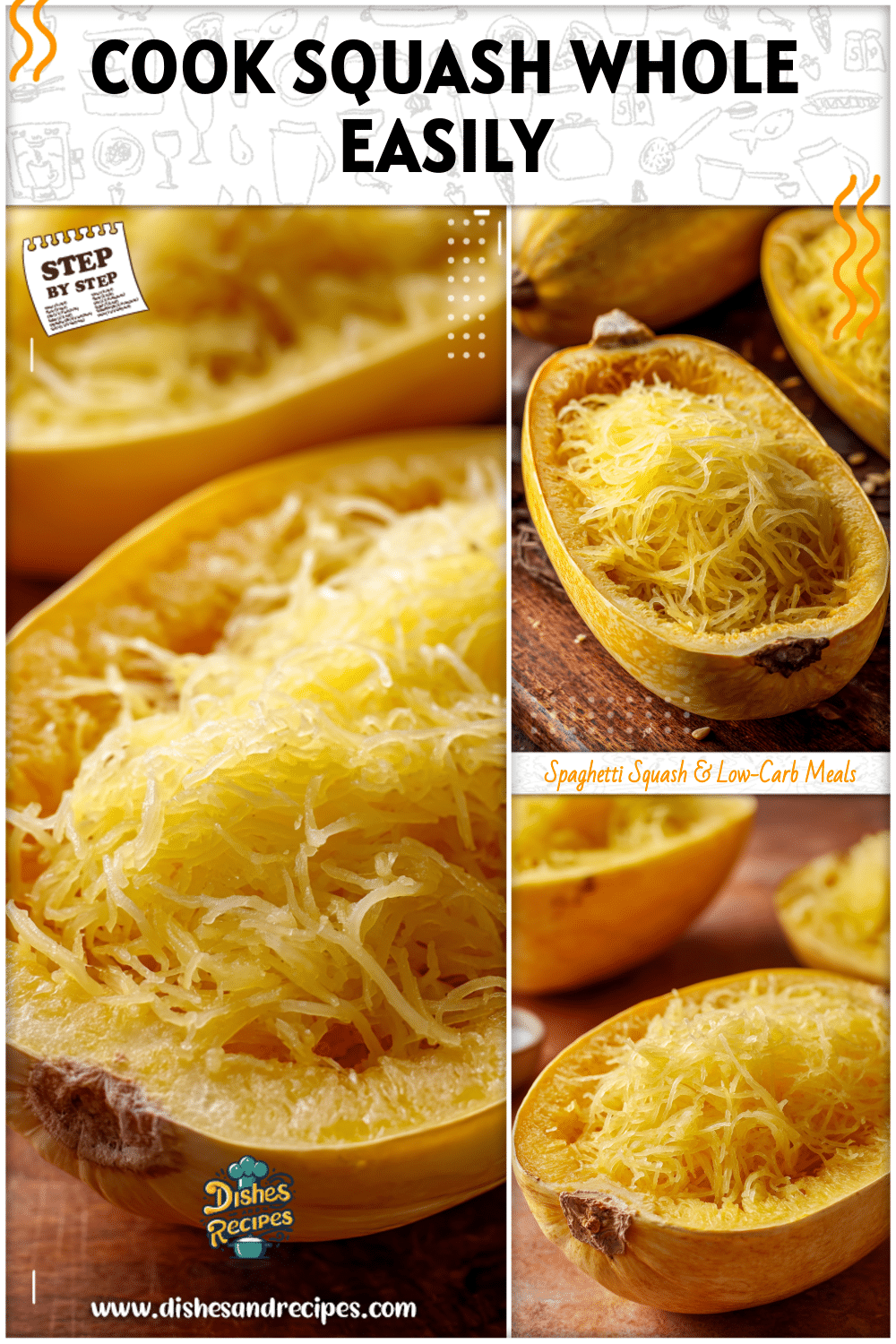
Why Cook Spaghetti Squash Whole?
A Personal Connection to Spaghetti Squash
The first time I bought a spaghetti squash, I nearly gave up before dinner even started. I remember setting it on the cutting board, knife in hand, and realizing just how tough its skin was. Then a friend shared a simple trick: you don’t need to cut it first at all—just roast the whole thing. That discovery changed weeknight dinners in my home. Suddenly, learning how to cook spaghetti squash whole became my go-to method, and the best part? It felt effortless. What once seemed intimidating became one of the easiest ways to get a comforting, healthy side dish or base for a full meal.
There are plenty of reasons people choose the whole-cooking method, and once you try it, you’ll see why it’s so popular. First, there’s no struggling with slicing through a hard, raw squash—you simply place it in the oven and let the heat do the work. This saves time and makes the process safer. Cooking spaghetti squash whole also helps lock in moisture, giving you strands that are more tender and flavorful, perfect for any spaghetti squash recipes you want to try. Add in the health benefits—fewer carbs, fewer calories, and a boost of vitamins—and it becomes a smart, versatile option for weeknight meals and creative cooking alike.
Cooking it this way transforms spaghetti squash from intimidating to incredibly approachable, giving both new and experienced home cooks a reliable method for fast, healthy meals any night of the week.
Print
Roasted Whole Spaghetti Squash
- Total Time: 55 minutes
- Yield: 2–4 servings 1x
Description
A simple, hands-off method for cooking spaghetti squash whole in the oven, yielding tender, noodle-like strands perfect for low-carb meals and versatile recipes.
Ingredients
Instructions
1. Preheat oven to 400°F (200°C).
2. Rinse and dry the spaghetti squash. Optionally pierce with a fork to release steam.
3. Place the whole squash on a baking sheet; roast for 45–60 minutes, turning halfway, until a knife easily pierces the skin.
4. Remove from oven and let rest 10 minutes to cool slightly.
5. Cut squash lengthwise with a sharp knife; scoop out seeds.
6. Use a fork to scrape the flesh into strands.
7. Drizzle with olive oil and season with salt and pepper, or use in your favorite recipe.
- Prep Time: 5 minutes
- Cook Time: 50 minutes
Nutrition
- Calories: 150
- Sodium: 30
- Fat: 7
- Carbohydrates: 20
- Protein: 3
Step-by-Step Guide for Cooking Spaghetti Squash Whole
Ingredients and Tools You’ll Need
Cooking spaghetti squash whole doesn’t require much—just a few basics you probably already have in your kitchen. Below is a simple reference table so you can gather everything in one go:
| Ingredients | Tools |
|---|---|
| 1 medium spaghetti squash | Baking sheet |
| 1–2 tsp olive oil (optional, for brushing after cooking) | Sharp chef’s knife (for halving post-roast) |
| Salt & pepper (to taste) | Fork (for pulling strands) |
| Your favorite herbs or spices (optional) | Oven mitts (for safe handling) |
Detailed Cooking Instructions
- Preheat your oven
Set your oven temperature to 375°F to 400°F (190°C–200°C). This range works best for roasting while keeping the moisture inside the squash. - Prep the squash
Rinse the outside skin under cold water and pat dry. At this stage, you don’t need to cut or season anything. Some people choose to pierce the squash a few times with a fork or paring knife to let steam escape, but this step is optional. - Place on a baking sheet
Put the whole squash on a sturdy baking sheet or roasting pan. You don’t need foil, but lining the pan with parchment can make cleanup easier. - Bake until tender
The average spaghetti squash cook time is about 45–60 minutes, depending on size. Smaller squash may be ready closer to 40 minutes, while larger ones can take the full hour. Halfway through, rotate the squash for even cooking. - Test doneness
You’ll know it’s ready when a knife easily pierces through the skin and flesh without resistance. If it still feels firm, return it to the oven for another 5–10 minutes and test again. - Cool briefly and cut
Use oven mitts to remove the squash and let it rest for 10 minutes. This makes it safer to handle. Then, with a sharp chef’s knife, cut it lengthwise from top to bottom. The skin will be much softer and easier to slice compared to when it was raw. - Scoop and shred strands
Once halved, use a spoon to remove the seeds from the center. Then take a fork and gently scrape the flesh. It will naturally separate into long, noodle-like strands—the signature look of spaghetti squash. - Season and serve
Now’s the fun part: drizzle with olive oil, sprinkle with salt and pepper, or mix with your favorite sauces. From here, you can use it as a pasta substitute, side dish, or base for hearty spaghetti squash recipes.
Pro tip: If your squash seems watery, simply place the strands in a colander for a few minutes to drain before tossing into recipes.
Tips, Variations, and Recipes with Spaghetti Squash
Helpful Tips for Perfect Results
- Avoiding excess moisture
After pulling the strands, let them sit briefly in a colander or press with paper towels to absorb extra liquid—especially useful if adding sauces later. - For firmer vs. softer strands
If you prefer al dente, roast closer to 40–45 minutes. For softer strands, extend the spaghetti squash cook time to about 55–60 minutes. - Smarter storage tips
Keep cooked strands in an airtight container in the fridge for 4–5 days. For freezing, spread strands on a baking sheet before sealing in freezer bags to prevent clumping. - Safe handling after cooking
Let the squash rest 10 minutes before cutting. Always use a stable cutting board and a sharp knife for safety.
Recipe Inspiration Using Roasted Spaghetti Squash
- Classic Spaghetti with Marinara
Toss strands with marinara, fresh basil, and Parmesan for a lighter spin on pasta night. - Garlic-Parmesan Style
Sauté olive oil, garlic, and red pepper flakes, then toss with squash and finish with Parmesan and parsley. - Quick Spaghetti Squash Casserole
Mix strands with sautéed veggies, ground turkey or chicken, tomato sauce, and cheese. Bake until bubbly and golden.
Cooking spaghetti squash whole not only saves cutting time—it also streamlines the prep for all these recipes. Once you try this method, you’ll see why it’s a favorite for creating easy, versatile meals that range from simple sides to hearty family dinners.
FAQs and Conclusion
Frequently Asked Questions
How long does it take to cook spaghetti squash whole?
The cook time is typically 45–60 minutes at 375°F–400°F (190°C–200°C), depending on size.
Do you need to pierce spaghetti squash before roasting?
It’s optional. Some prick the skin lightly to release steam, but it cooks just fine without.
How do you cut spaghetti squash safely after cooking whole?
Let it rest 10 minutes, then use a sharp knife on a stable board. The softened skin makes slicing far easier than cutting raw.
Can you cook spaghetti squash in the microwave whole?
Yes. Pierce a few times, then microwave 10–15 minutes, flipping halfway. Rest before slicing. The oven method provides deeper flavor, but microwave is quicker.
What are the best seasonings for spaghetti squash strands?
Olive oil, salt, and pepper are a classic base. Garlic, basil, oregano, parsley, Parmesan, or red pepper flakes can take it further. It also absorbs sauces beautifully.
Conclusion
Learning how to cook spaghetti squash whole is a game-changer for anyone looking to cut prep time and enjoy delicious, healthier meals. By roasting it intact, you skip the struggle of slicing raw squash, while keeping the flesh moist and tender. The result is a versatile base you can use for countless spaghetti squash recipes, from simple marinara to baked casseroles. This method is simple, safe, and highly practical—perfect for weeknight dinners or meal prep. Once you try it, you’ll see why cooking spaghetti squash whole quickly becomes a household favorite for both flavor and convenience.
